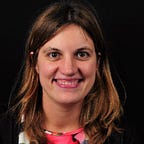Life in DevOps from DevOps Live Europe 2022 — (2) Sustainability
This second post with takeaways from DevOps Live Europe 2022, covers aspects related to sustainability.
“The most sustainable energy is the one YOU don’t use.”
We all have a roll to play in sustainability. There were a few sessions specifically related to the topic. And a few others mentioned it too, although not many. In fact, a panellist criticised the fact that no expositors in the event were making emphasis in their sustainability policies.
For me the key takeaway is that sustainability has to be one of the explicit criteria that is considered when each of us are part of making decisions. I took away a few recommendations provided during the sessions I joined:
- Be curious about your suppliers’ and partners’ sustainability policies by asking them what are their specific actions and plans around sustainability. I think this recommendation is very useful because, on the one side, you will get to know if they are the right partners for you, on the other side, you will get some ideas you can apply on your own company.
- Challenge data storage needs and policies. Only store the data for which you have a use case. Don’t store data in case in the future you might have a new use case that might need it. Data storage might be cheap in “money terms”, but its green impact is costly.
- Challenge the many environments you have. Do you really need production, staging and dev? My take on this is that there are also intermediate options. It is a matter of balance. For instance, you could keep dev environments, but switch them off and on on demand. It is true this will have some cons. Our teams will have to wait some time for environments to be ready. If you are using cloud, your environments are automated and controllable via a CICD tool chain, this should be a matter or minutes or a few hours. Almost unnoticed if automated too. The savings in monetary and sustainability currency might make it worth it.
- Consider if a single tool could meet your needs for several activities instead of having a broad set of tools. Having many tools involves a complex operating model. It needs people with different skills to run them and use them, switching across them can lead to poor employee experience and slow delivery flow. Considering the shortage of talent, these are definitely two things we want to avoid. Moreover, having multiple tools leads to a resource demanding lifecycle management, as its requires their own patching, upgrading, procurement and vendor management. These are not new points to many of us. However, we also must start considering each tool has its own carbon footprint, for instance, the usage of compute, memory and data resources. Some cybersecurity solutions, namely CNAPP, are agentless, reducing the carbon footprint related to implement them compared to previous generations of cyber defence tools.
- Some speakers recognised that fact that there are no standard metrics to measure and evaluate sustainability of a given solution or service, is a challenge towards having conversations about a topic or setting your own (company/personal/team) goals about this. Nonetheless, it is worth starting with something, rather than (continuing) doing nothing.
- And on this line of thought, of starting somewhere, some members of the public commented that the recently published AWS Sustainability pillar in their well architected framework lacked depth. Nonetheless, I personally think that it is a good starting point that this pillar exists and it is consciously considered when making architectural decisions at the same level of, let’s say, resilience, security or other topics that have historically dominated the design of solutions. I have one goal to become more familiar with it myself and also with the AWS Carbon Footprint tool. Only when I get to know the I can figure out what else I might need to get even better at managing the sustainability impact of my organisation from my role.
A session ended with a reminder that I really liked: What remains true is that the most sustainable energy is the one you do not use. Then, opt for renewing or using renewables.
